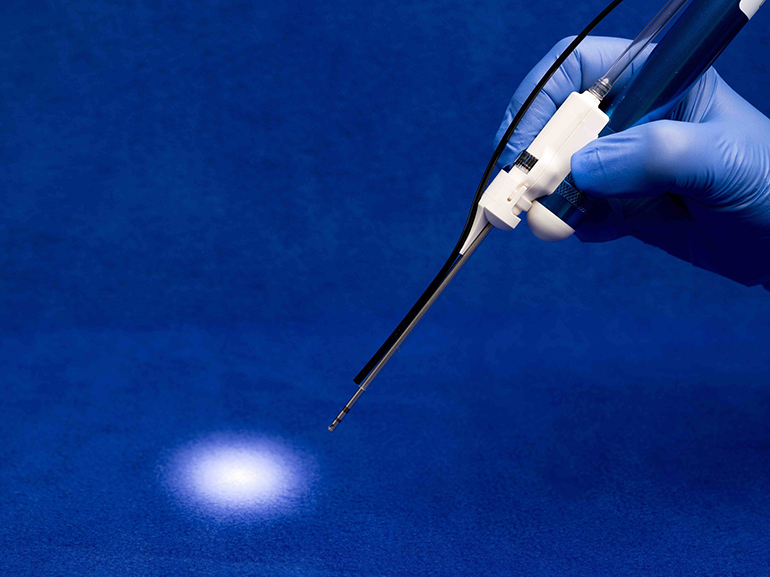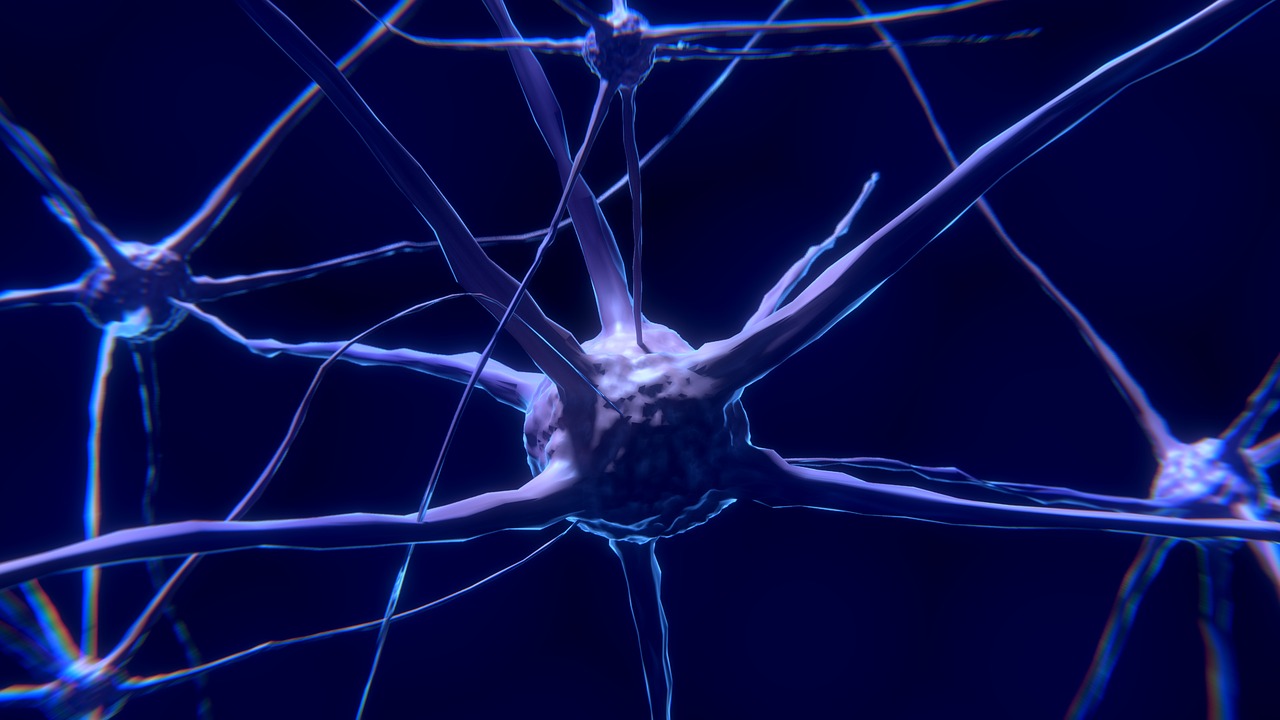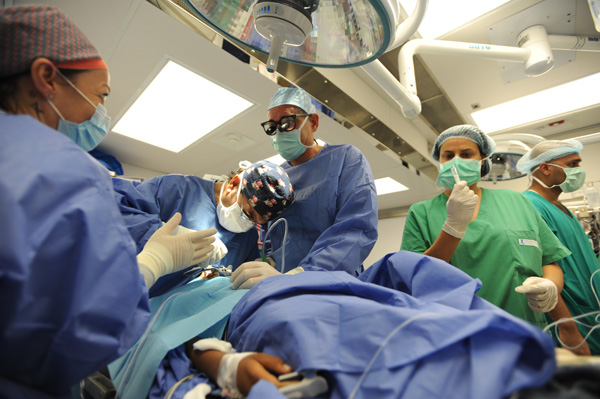Neurosurgery is often thought of as one of the most difficult medical disciplines to pursue. Surgeons are tasked with breaching the multiple protective layers of the brain then navigating through an intricate web of fibers, tissues, blood vessels and fluid to extract a tumor or implant a device — all this without harming the delicate structures within.
Scientific advancements have come a long way to aid surgeons with planning, execution and follow-up. Standard magnetic resonance imaging (MRI) helps show the spatial relationships of a lesion to cortical areas, but they are unable to resolve the individual white matter fibers that form tracts in the brain. This problem is solved with diffusion MRI a technique which delineates microstructural information in the brain, including an individual patients’ white matter tracts. Today, these diffusion MRI data are used to assemble 3D representations of the brain’s white matter pathways.
This technique, also known as tractography, is currently used to better understand neuroanatomy and to help surgeons plan and conduct neurosurgeries. But even a sophisticated tool like tractography has room for improvement.
Toronto-based medical technology company, Synaptive Medical, is at the forefront of addressing the challenges in neurosurgery through advanced software, robotics, digital microscopy and data platforms. In an interview with Xtalks, Synaptive’s co-founder, president and chief strategy officer, Cameron Piron, explained the various limitations of modern tractography.

“Tractography has been around for almost 25 years,” said Piron. “The challenge has been making it accessible to surgeons. It’s highly user intensive, so you need a lot of effort from radiologists to create these 3D maps that represent millions of fibers in the brain. There is a lot of variability in how the data is acquired. [Another challenge] is to take that data and make it usable in the form for the surgeon…we want to make sure it’s easy to represent that data and make sure it’s done in a very short time window as well.”
Synaptive has two main products to address these issues. The first is surgical planning software called Modus PlanTM that generates high-density information maps capable of segmenting out individual fibers of a patient’s brain, allowing the surgeon to craft a tailored surgical plan specific to each patient. The software is also capable of standardizing data acquisition and uses automations to process and present the data in a usable form for the surgeon.
“We have another product called Modus VTM which is our robotic system, where V is for vision,” explained Piron. “[This] product can work with our Plan product but it can also work independently. It’s a six-degrees of freedom robotic optic platform that allows for unprecedented ability to see structures in the brain during surgery and allows it to be used in an automatic fashion with ergonomics that they otherwise wouldn’t experience with the operating suite.”
“We really married the idea of automation of software with the ability to automate movement of optics in the surgical suite, ultimately reducing surgical times and hopefully providing the best possible pathways to address neurosurgical patients and hopefully reducing the trauma to these patients.”
Traditional approaches to surgery involve identifying the shortest route to do the least amount of trauma to the brain, but sometimes, the shortest approach is not always the best approach. With advanced planning software and robotics, surgeons can take the connectivity, network and tractography information to develop the right approach for that specific patient. According to Piron, surgeons may take a significantly different approach to surgery using these tools about 20 percent of the time. This typically results in much less trauma to the patient and much faster recovery.
These products have applications beyond surgery, Piron added. “We are generally seeing the use of tractography increasing across the whole field of neuroscience. We’ve seen the use of tractography to look at recovery of head trauma [such as] major acute trauma or subtle head injuries over time. The use in radiation therapy is also going to be emerging as well.
“In the same light that you want to avoid the [white matter] fibers during surgery, radiosurgery is effectively delivering a beam to a very focal area. You intend to hit the tumor, but you should be respectful of the fibers as well so you’re not causing trauma. I think we’ll see an insurgence there. There are also applications of deep brain stimulation.
“There’s recently been some exciting publications showing if you look at the placement of the deep brain stimulators relative to the fiber network, you can anticipate more consistent results with patients. There has been some fabulous work done by groups [like] Stanford [who] looked at how the branching patterns change over time as we’re learning. It really becomes a fundamental measurement of brain health and I think it applies to all areas of neuroscience.”
The company’s success lies in its regulatory footprint. Both products are being commercialized in multiple countries around the world and Piron expects their impact will only grow moving forward.
“For us, it’s really important that we’re not just addressing the challenges in North America but really can become a platform to improve standard of care across the world.
“If you look at standard of care today — this is true not just in North America, but around the world — people are trying to do more with less in healthcare. People are really driving towards minimally invasive and personalized approaches to healthcare. We firmly believe [Modus] Plan is emerging in tractography as a technology that really should be standard of care across a patient’s procedure, whether it’s neurosurgery, management of stroke or positioning for deep brain stimulators. We really do believe these more quantitative views of the brain allow surgeons to make better decisions in surgery and radiation therapy and we eventually hope it will help in making better decisions for different drug decisions.
“We really think there could be a new standard of imaging performance and a new level of ergonomics that everyone can really enjoy that better image quality — and that’s where Modus V comes in.”

Piron predicts the movement towards higher-resolution imaging and greater integration of these data into decision-making is only starting to grow. The same is true for robotics, although it will take time for these technologies to be adopted.
“In medicine, rightfully, there’s always going to be slower adoption than you see in other technology areas. And you see the ebbs and flows. For a long time, for robotics, there was some resistance [but] now you’re seeing a lot of clinical success from the adoption of robotics. And now people are a little faster to adopt. But I think there’s always a really good and healthy governor of adoption of technologies. [At the same time], there’s more and more pressure on healthcare pressures to deliver more. You’re going to see more technology to rise to a new level of performance.”
Neurosurgery has come a long way since the first lobotomies in the 1950s. Companies like Synaptive Medical hope to continue transforming the way these challenging procedures are performed by leveraging the cutting-edge technologies at our disposal.
Piron concluded, “It really is a win for the patient, a win for the physician and also a win for the hospital who is trying to make more with their limited resource. This is a really a good example where data drives much better decisions.”











Join or login to leave a comment
JOIN LOGIN